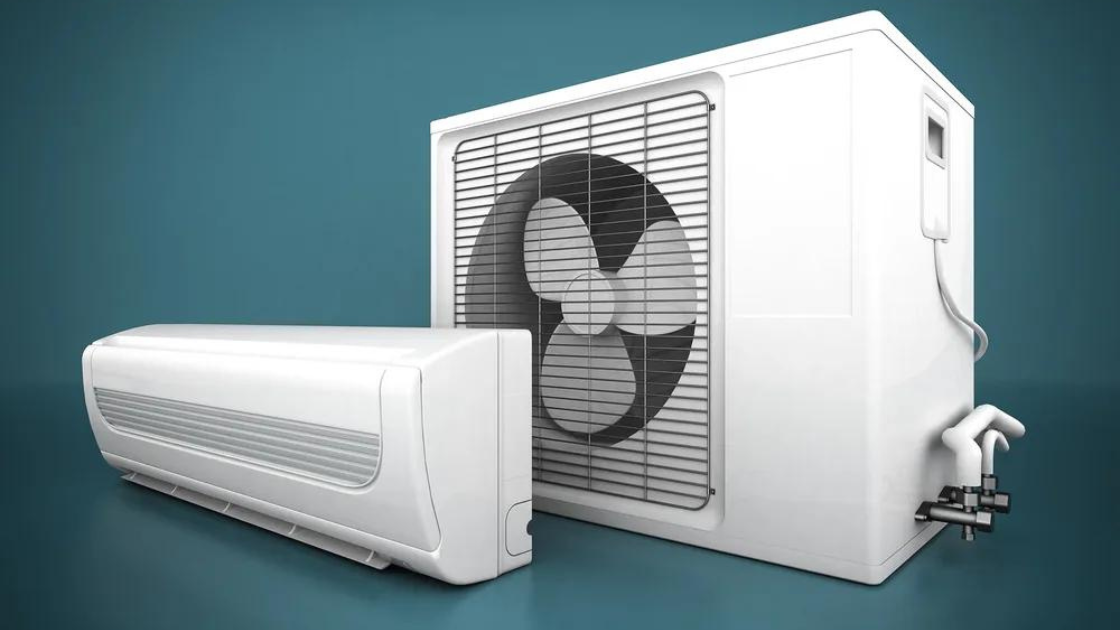A ductless air conditioner, often known as a mini-split system, is a cooling system that does not need ductwork. A ductless system in your house is an effective method to offer temperature control without requiring further improvements.
A ductless air conditioner often comprises a wall-mounted inside unit and an exterior compressor. These devices are often used when a window air conditioner or baseboard heating is considered, such as in a house addition.
Unlike large window units, mini-split systems need just a tiny hole to be drilled into the wall, making them less vulnerable to security issues and air leakage. These systems also fit in better with the environment, are quieter, and use less energy. But how can numerous mini-split units chill a whole house?
The mini-split network is linked to a single outside compressor, which gets warm air from home. Once the central unit is in place, homeowners may choose from various interior unit alternatives such as ceiling register, floor mount, or ceiling recess to suit the demands and décor of each room.
While the ease of installation is the most obvious benefit of having a ductless system in your house, there are several additional benefits as well, including:
- Saving 20-30% of energy by not allowing cold air to seep via ducts
- Because mini-splits use heat pumps, they can heat and cool a space.
- Instead of shutting down the whole system, inverter compressors react to the system’s demands.
- Integrated zoning enables each room to have complete temperature control.
- Ductless units are silent and unobtrusive.
Although ductless air conditioners offer several benefits, they also have certain disadvantages.
Ductless units are more costly than window or baseboard units and need monthly filter cleaning to remove dust and debris. Furthermore, these units aren’t generally visually pleasant since they are primarily white or beige. Ductless mini-split systems provide customized, quiet, and efficient options, whatever your demands are, how you use it, or where it is in your space.
How Does a Ductless Air Conditioner Work?
The key difference between a ductless air conditioner and a standard central air conditioner is that it does not need ducting. Each room or part of the residence is cooled individually by its unique unit with mini-splits. An outside compressor and an inside evaporator/air handler comprise the system. The refrigerant is pumped from the outside compressor to the air handler, where a fan delivers cool air into the room.
Unlike typical AC units, ductless systems may save you up to 30% on energy bills. They provide excellent climate control, enabling you to adjust the temperature in any room of your house. They are quieter than regular air conditioners and can be mounted practically anywhere. Ductless systems can have many benefits, including:
- Zoned cooling – various temperatures may be adjusted for each room to guarantee comfort.
- Simple installation – Ductless units need a tiny hole in the wall and are simple to install.
- Flexibility – they may be used to both heat and cool an area.
- Low maintenance – unlike standard AC units, there is no need to clean filters or perform routine maintenance.
- Energy efficiency – Ductless systems are very energy efficient, saving you money on your utility cost.
Conclusion
Ductless air conditioners are a low-cost, energy-efficient way to chill your house. They are ideal for houses with limited space or that lack existing ducting. With several indoor units linked to a single outdoor compressor, homeowners may choose different indoor unit choices such as ceiling register, floor mount, or ceiling recess to meet the demands and décor of each room. Consider investing in a ductless air conditioner if you want a cost-effective, energy-efficient solution to cool your house. It might be the deciding factor.
